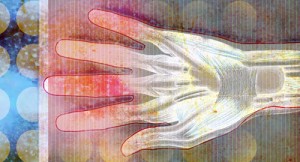 Clinicians use a non-invasive and inexpensive imaging technique—nailfold videocapillaroscopy—to study the capillary network. Capillary changes in nailfold videocapillaroscopy correspond well with disease activity in systemic sclerosis (SSc) and may be useful in evaluating the prognosis in Raynaud’s phenomenon. Thus, nailfold videocapillaroscopy may be able to effectively assess abnormalities associated with inflammatory myopathies, such as those classified by Bohan and Peter criteria as dermatomyositis, overlap myositis, antisynthetase syndrome and immune-mediated necrotizing myopathy.
Clinicians use a non-invasive and inexpensive imaging technique—nailfold videocapillaroscopy—to study the capillary network. Capillary changes in nailfold videocapillaroscopy correspond well with disease activity in systemic sclerosis (SSc) and may be useful in evaluating the prognosis in Raynaud’s phenomenon. Thus, nailfold videocapillaroscopy may be able to effectively assess abnormalities associated with inflammatory myopathies, such as those classified by Bohan and Peter criteria as dermatomyositis, overlap myositis, antisynthetase syndrome and immune-mediated necrotizing myopathy.
Some studies indicate dermatomyositis is associated with scleroderma or a scleroderma-like pattern, reinforcing the idea that nailfold videocapillaroscopy may be a useful tool for inflammatory myopathies.
Researchers have investigated the differences in nailfold videocapillaroscopy features between patients with dermatomyositis, overlap myositis, antisynthetase syndrome and immune-mediated necrotizing myopathy. They found dermatomyositis and overlap myositis nailfold videocapillaroscopy abnormalities appear different from antisynthetase syndrome and immune-mediated necrotizing myopathy abnormalities.
Caroline Soubrier of Hopital Timone in Marseille and colleagues write that, using their limited series of patients (N=43), they determined nailfold videocapillaroscopy-specific patterns associated with myositis-specific antibody subtypes of dermatomyositis. Their findings were published online Aug. 22 in Clinical Rheumatology.1
The cross-sectional monocentric study included patients with four types of inflammatory myopathies (dermatomyositis=17, overlap myositis=8, antisynthetase syndrome=12 and immune-mediated necrotizing myopathy=6). Patients were classified by subtype based on clinical, biological and pathological characteristics. Over a six-month period, the investigators examined 14 men and 29 women with a mean age of 54.9 ± 17.4 years. They used unblinded nailfold videocapillaroscopy and documented the presence of giant and ramified capillaries, tortuosities, capillary density, disorganization and scleroderma pattern. The researchers also compared the patients with inflammatory myopathies with a group of individuals with SSc who were classified as being in Cutolo’s early, active or late states.
The investigators found vascular disorganization and avascular zones only in dermatomyositis and overlap myositis patients. They observed giant capillaries, disorganization and major capillary loss in overlap myositis and dermatomyositis, but not in antisynthetase syndrome and immune-mediated necrotizing myopathy patients. The percentage of patients with giant capillaries was higher in overlap myositis (n=4/8) than in dermatomyositis (n=3/17) and absent in antisynthetase syndrome and immune-mediated necrotizing myopathy. In contrast, the frequency of giant-ramified capillaries was low and not different between dermatomyositis and overlap myositis patients.
The researchers observed avascular zones in 43.7% of all SSc patients and 92.8% of patients with late state SSc. They found only patients with overlap myositis had nailfold videocapillaroscopy changes that were similar to those seen in SSc patients.
In general, the investigators found no correlation between nailfold videocapillaroscopy abnormalities in inflammatory myopathies and clinical manifestations. However, they did find a higher frequency of giant capillaries in patients with Raynaud’s phenomenon. The frequency of ramified capillaries, tortuosities, hemorrhages or thrombosis was not different between subgroups.
Lara C. Pullen, PhD, is a medical writer based in the Chicago area.
Reference
- Soubrier C, Seguier J, Di Costanzo MP, et al. Nailfold videocapillaroscopy alterations in dermatomyositis, antisynthetase syndrome, overlap myositis and immune-mediated necrotizing myopathy. Clin Rheumatol. 2019 Dec;38(12):3451–3458. Epub 2019 Aug 22.


